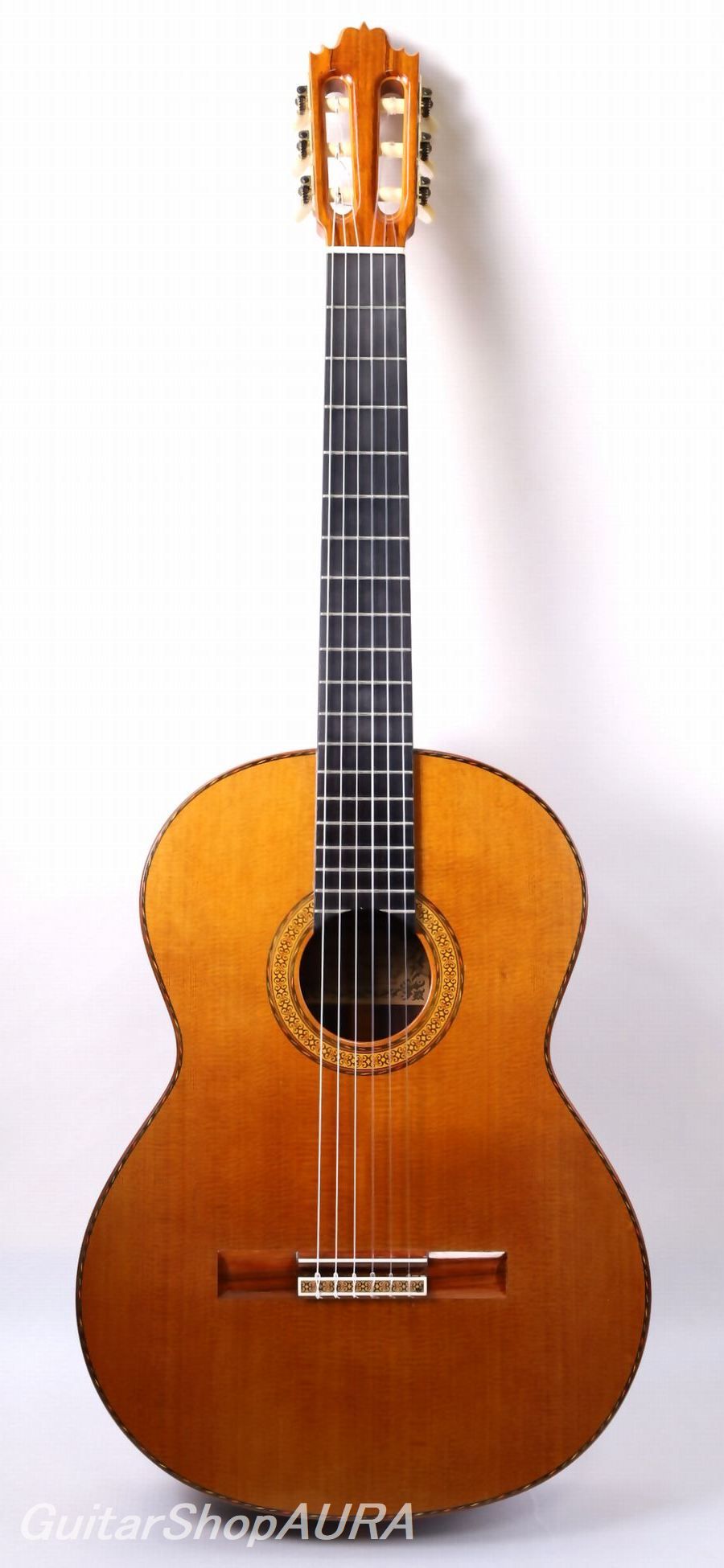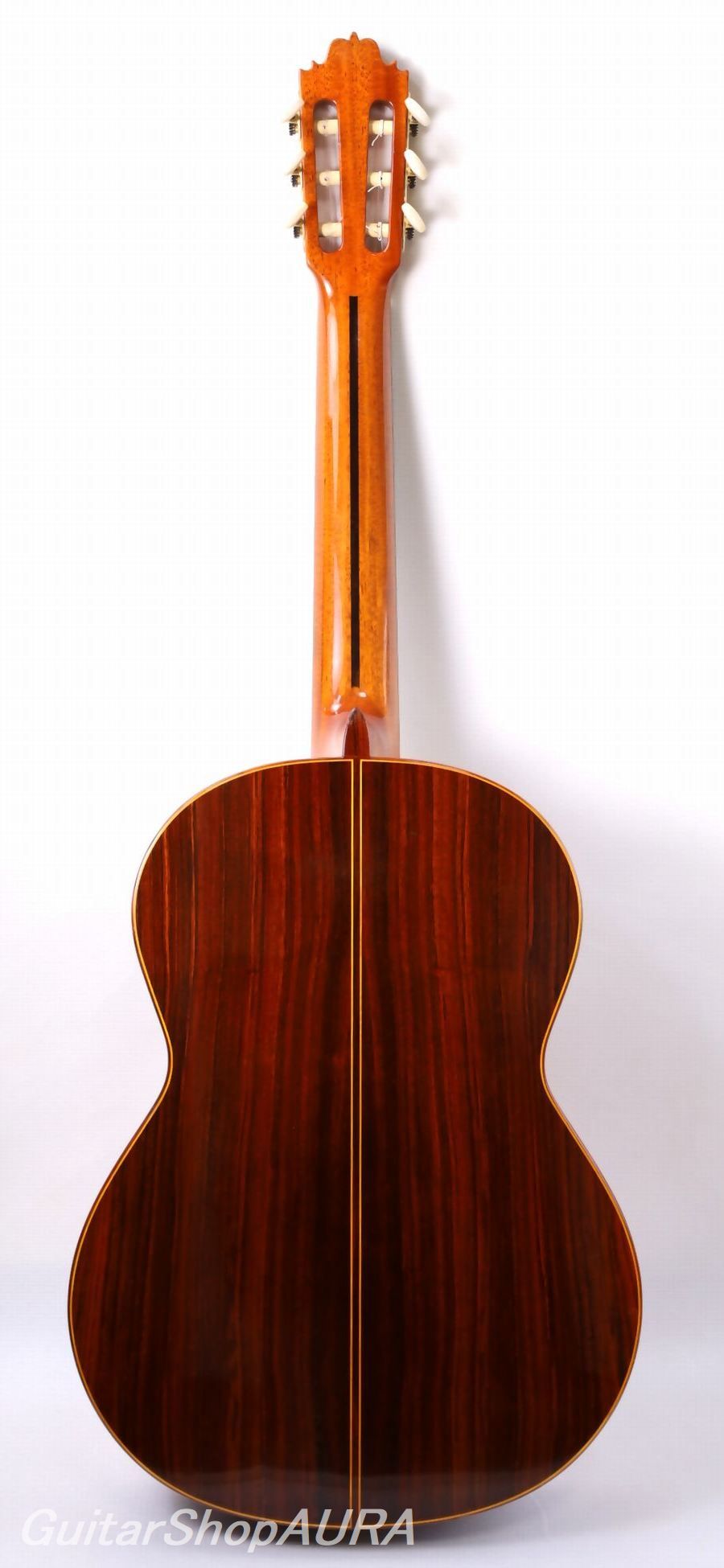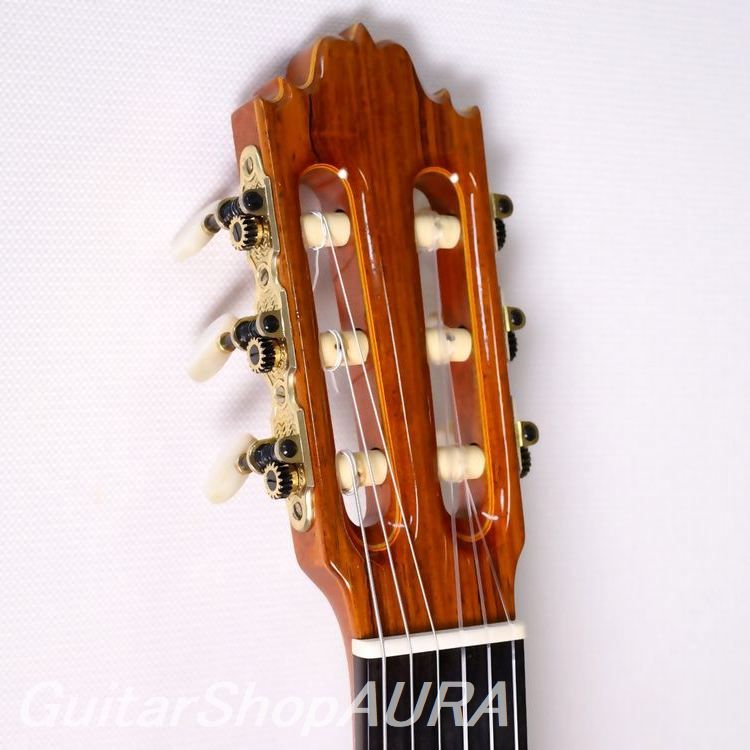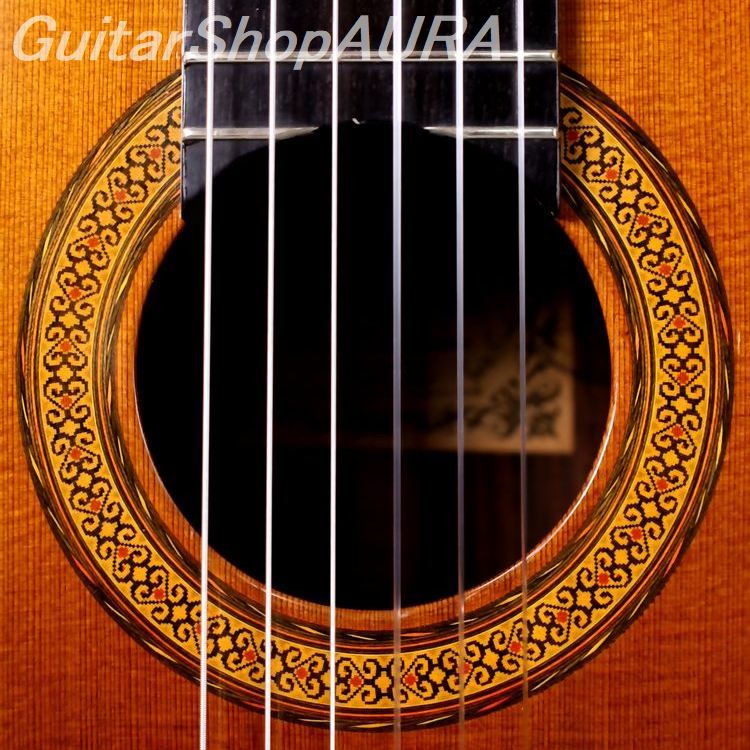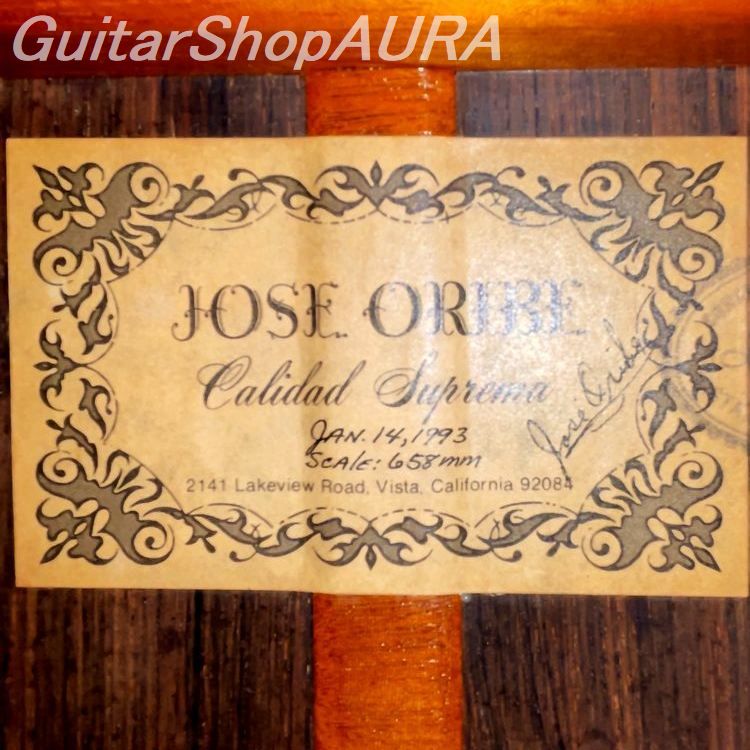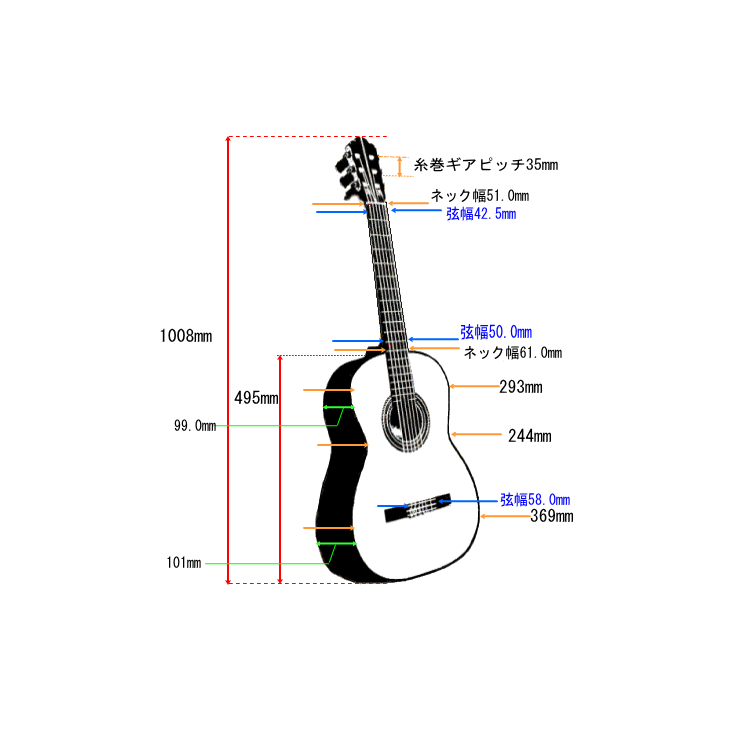Neck:Mahogany
Fingerboard:Ebony
Finish(Top):Shellac
Finish(Back & Sides):lacquer
Tuning Machines:Sloane
String Height(1st):2.7mm
String Height(6th):3.3mm
【Luthier Information】
José Oribe
Born in 1932 in Pennsylvania, USA, to Spanish parents, José Oribe initially pursued a career as an aeronautical engineer. At the age of 23, upon hearing the sound of a classical guitar for the first time, he was deeply captivated by its tone and soon immersed himself in studying the instrument. He traveled to Spain — his father’s homeland — to deepen his understanding, and upon returning to the United States, he left his engineering position in 1962 to open a small guitar shop and workshop, dedicating himself fully to guitar making.
In 1973, Oribe closed his retail store and relocated his workshop to the outskirts of San Diego, California, focusing exclusively on lutherie. His engineering background provided him with exceptional precision and technical mastery, and his meticulous production methods soon enabled him to increase output dramatically while maintaining a consistently high level of quality. Each instrument was entirely handcrafted with refined attention to detail, and the combination of immaculate workmanship and elegant aesthetics quickly earned Oribe international acclaim as one of America’s finest classical guitar makers.
Stylistically, Oribe’s work reflects strong Madrid-school influences, particularly that of José Ramírez, but with his own distinct precision and sense of balance. His guitars are known for their rich, romantic tone, especially the cedar-top models, which became highly sought after and helped establish Oribe’s reputation as one of the premier makers of fine cedar-top guitars alongside Ramírez.
Using only the finest tonewoods — such as carefully selected Sequoia cedar and Brazilian rosewood — and achieving flawless craftsmanship even in the hidden internal structures, Oribe produced guitars of extraordinary refinement and beauty. His instruments of the 1980s and 1990s are now considered among the finest of their era. Since the 2000s, production has been limited, but Oribe continues to craft guitars in collaboration with his son, John Martin Oribe.
【Instrument Information】
José Oribe “Caridad Suprema” 1993 – 658mm Scale, Used
The Caridad Suprema was one of José Oribe’s flagship models, standing alongside the Gran Suprema as a completely hand-built masterpiece crafted personally by Oribe.
The top is likely made from Sequoia cedar, paired with cocobolo back and sides — woods chosen with Oribe’s characteristic aesthetic sensitivity. The instrument’s design conveys a majestic elegance: a stately body shape, and a distinctive headstock reminiscent of Gothic architecture. Every detail displays refined craftsmanship, a hallmark that made Oribe’s guitars as celebrated as Ramírez during the same period.
Notably, the sides feature a double-laminate structure, with an additional inner layer of wood, a specification similar to that used by Ramírez.
Tonally, the guitar offers a firm, focused core combined with the depth and warmth characteristic of cedar, producing a full-bodied resonance that fills the soundbox while maintaining remarkable clarity and note definition. It responds sensitively to nuance, allowing for expressive phrasing and dynamic subtlety. Both right and left hands are met with a quick, articulate response, giving melodies a precise and singing quality. The sound embodies Oribe’s hallmark blend of romantic richness, controlled power, and refined nobility, with impressive projection that makes it deeply satisfying to play.
The top bracing features a single harmonic bar above the soundhole (neck side) supported by a thin reinforcement plate around the neck block, and another harmonic bar below the soundhole (bridge side), angled downward from bass to treble. A short auxiliary brace connects the two on the treble side.
Below the waist, seven fan braces radiate toward the lower bout, terminating against two closing bars — one long and one short — arranged in an inverted “V” pattern (the treble-side bar being longer). A large bridge plate reinforces the area beneath the bridge.
The entire design is asymmetrical, intentionally differentiating the tonal response of the treble and bass sides. Whereas Ramírez favored a strong treble projection with resonance around A, Oribe’s guitars typically have a lower G–G♯ resonance, giving the bass register a distinct identity and achieving a more harmonious overall balance.
The top is finished in French polish (shellac), while the back and sides are lacquer-finished. There are no cracks or major repairs. Minor surface scratches and light wear can be seen around the soundhole and bridge area (including slight string marks near the 1st and 2nd strings), as well as small touch-ups elsewhere. The back and sides show light finish wear and minor rub marks from playing, but overall the instrument remains in very clean condition.
The neck and frets are in excellent playing condition, with smooth action and no issues in functionality. The tuners are Sloane, operating perfectly. The neck has Oribe’s characteristic rounded D-shape profile.
String height is 2.7 mm (1st string) and 3.3 mm (6th string) at the 12th fret, with 1.5–2.5 mm of saddle height remaining.
Includes the original triangular hard case (repaired externally with protective tape; interior and latch function are intact).
〔detail〕
| Instrument | Jose Oribe |
| Category | 輸入クラシック 中古 |
| Number/Model | Calidad Suprema |
| Scale length | 658mm |
| Country | U.S.A |
| Year | 1993Year |
| Top | Solid Ceder |
| Side&Back | Solid Cocobolo |
| Condition※ | 7 |
| List price | 時価 |
| Price (tax included) | お問い合わせ下さい。 |
| option | Original Hard Case |
